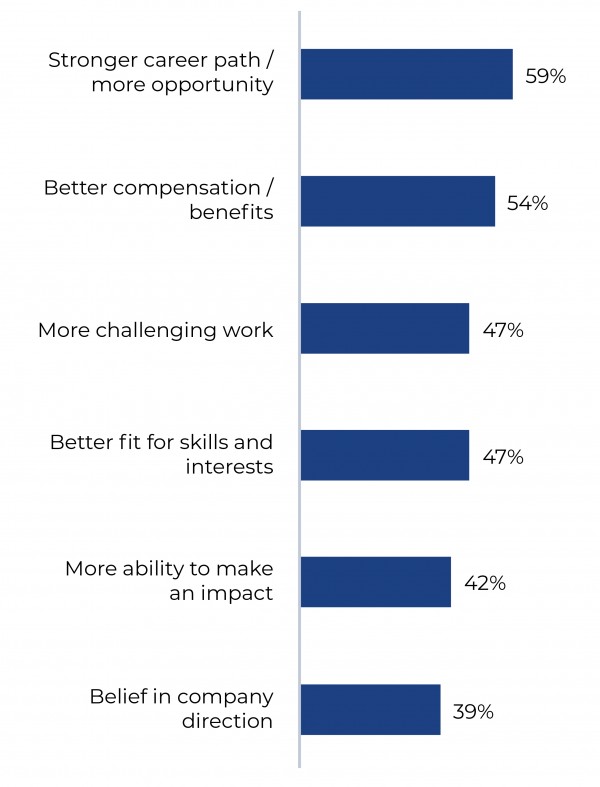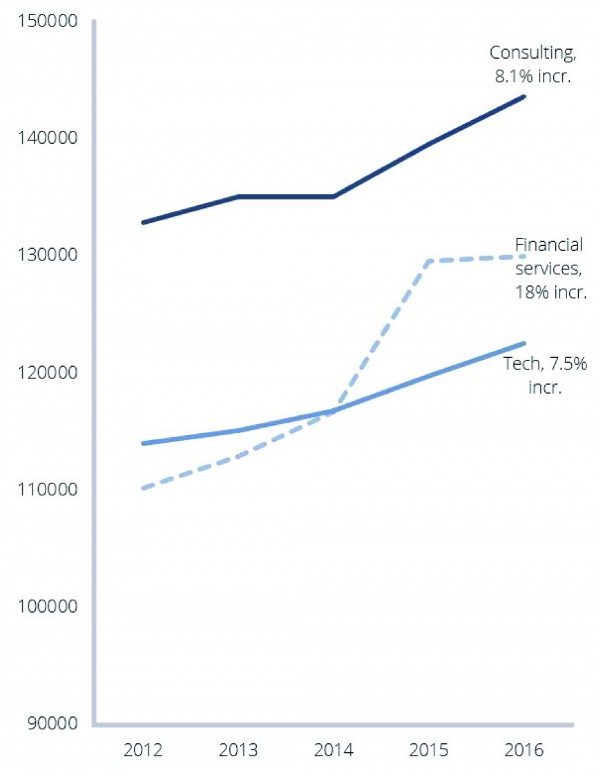How to Hire Missionaries in an Era of Mercenaries

As MarketWatch reports, in November 2018, Jordan Bradford left the association-management firm she had been with for five years in search of a better-paying job. She found one — but she soon realized she was still being underpaid. So, within six months, Bradford was on the hunt again in the job market. Less than a year after accepting that second role, she once again switched firms, netting herself a $22,000 raise in the process.
Stories like Bradford’s are becoming more common, and more employers are finding they have to open up their wallets to attract the candidates they want. While the arrival of COVID-19 has shaken up the job market in unexpected ways, the days of an employee sticking with one company forever were over long before that happened, and it’s unlikely they’ll return any time soon.
As professionals take a more dynamic approach to their careers, companies often end up trapped in a seemingly endless cycle of recruiting and replacing talent. Many employers are now wondering: “How can we recruit missionaries who will stick around, rather than mercenaries who will be lured away by companies offering higher pay? Is that even still possible?”
Is Loyalty Gone?
For years now, recruiters and hiring managers have seen the stigma around job hopping lessening. Indeed, earlier this year, the number of US employees who voluntarily quit their jobs was at a 15-year high.
But there’s no need to panic; the sky is not falling, and professional loyalty isn’t dead. First, it’s important to understand that employee turnover rates are still relatively low compared to the ’80s and ’90s. Second, there are still plenty of ways to attract those missionary employees to your organization.
Own Who You Are!
Our first recommendation is to own who you are! Empty statements, trendy recruiting jargon, and lofty rhetoric seldom work. You also don’t need a fridge filled with a dozen flavors of sparkling water to attract great talent.
Start by articulating the pain points your company is addressing in today’s economy. Your company doesn’t need to be revolutionizing the world. In fact, simple descriptions are often the most effective ones. Trader Joe’s, for example, emphasizes that it provides good food coupled with friendly and fun service — and the company reports employee turnover rates well below the industry average.
The next step is to talk about what would truly excite someone in this role. Don’t paint an overly rosy picture. Instead, provide a simple and truthful description of what would motivate the right person in this role.
Too many companies focus on buzzwords to position their firms and roles as great opportunities; we can’t tell you how many bureaucratic companies we’ve seen inaccurately describing themselves as “entrepreneurial,” just because they think this makes them sound en vogue. Wouldn’t you want a strong candidate who could see through that kind of smokescreen? If they couldn’t, would you really respect their judgment after you’ve hired them?
Instead of trying to be good enough for all candidates, focus on trying to be a great fit for a smaller segment of candidates. If all you can offer is vague Kool-Aid like “In this role, you’ll have tons of exposure to senior management, and you’ll get a lot of responsibility,” you will be competing for talent with every other company spouting similar jargon.
Emphasize how your company is different from others in your field. For example, as Netflix’s former chief talent officer Patty McCord explains in her book, Powerful: Building a Culture of Freedom and Responsibility, Netflix Chief Content Officer Ted Sarandos knew he couldn’t attract top-tier talent by tying to sell candidates on the company’s “game-changing-model” or just talking about how amazing this opportunity would be.
Most senior executives in Hollywood are good at that sort of pitch. Instead, Sarandos focused on identifying the best creative talent who could also execute their visions. He then gave them enormous freedom unheard of among the larger Hollywood studios. While traditional studios would, for instance, require all shows to go through a painful pilot process, Netflix would greenlight producers to create full seasons almost immediately. Orange Is the New Black (we were hooked on this show for one season too many) was approved before it even had a script. As McCord writes, of Sarandos’s bold new approach “has been the greatest differentiator between Netflix and the Hollywood studios” in attracting top-tier talent.
Understand Why People Change Jobs
LinkedIn’s “Why & How People Change Jobs” report indicates that when most candidates change jobs, they’re mainly looking for the opportunity to forge an exciting career path. Compensation is important, but it comes second to that new opportunity. There are other factors, too, and while they may not be as important, they still matter. When switching jobs, most candidates make a holistic decision based on all the criteria that are important to them.

Source: LinkedIn’s “Why & How People Change Jobs” report
Companies that compete for talent mainly through base compensation will soon find their competitors have followed suit. In effect, they will merely have raised the compensation bars for their industries without gaining any sustainable competitive advantage in the talent market.
What You Can Learn from the Battle Grounds of the War for Talent
The competition for top-10 MBA graduates neatly demonstrates the importance of not competing exclusively on salary. As shown in Figure 2 below, the share of graduates from top-10 MBA programs going into tech has increased significantly since 2012. This has come mainly at the expense of financial services and consulting firms. As tech companies gain ground in the war for talent, it is crucial to better understand how and why they are able to siphon top talent despite not offering the highest rates of compensation.

Source: MBA alumni websites, ECA analysis. Note: Based on available data across top-10 MBA programs; hedge funds are a sector of finance.
In 2012, financial services and consulting firms not only had higher base salaries than tech, they had also increased these salaries at faster rates (see Figure 3). But despite lower salaries, tech has been able to attract more talent from elite MBA programs.

Sources: MBA websites; ECA analysis
Tech companies are winning talent by challenging conventional wisdom and offering “softer” incentives, such as a more compelling career paths and superior perks, instead of focusing purely on base compensation.
To illustrate this point, it might be helpful to quote an article written by Amazon Vice President Maria Renz: “At Amazon, opportunities to move, grow, and take on new challenges are abundant. Our dynamic environment — where there is no shortage of interesting problems to solve or opportunities to build — is what has kept me here for so long. Amazon encourages employees to create their own career paths, and we have great flexibility to move between departments and roles.”
Companies like Amazon focus on creating more interesting career paths and learning curves, which amounts to a kind of “post-MBA MBA program.” Business students see this as a training ground where they can pick up skills they can apply to starting their own companies or acquire a more complete set of tools to grow professionally and make an impact. Like Amazon, many tech firms are trying to compete for talent with softer attributes (see Figure 4), rather than offering higher cash compensation to candidates.

In brief, successful companies hire missionaries by emphasizing the core issues they address in the economy, outlining what makes the job satisfying for the right person, and focusing on softer benefits. This doesn’t mean you have to offer Google-caliber perks to attract talent. Successful companies customize the softer attributes to the cultures they intend to create and thereby attract talent that is a better fit for them.
What if your company needs to fill a role and a solid candidate truly does not benefit from any of the opportunities and perks available at your firm? Then it is not a good fit. Accept that they might be an excellent mercenary, but if you want to build a team of missionaries, you’ll need to keep looking.
—
Atta Tarki is the author ofEvidence-Based Recruiting (McGraw Hill) and the CEO and founder of ECA. Find him on Twitter: @AttaTarki.
Alex Ham is the cofounder and director of TalentCompass.

